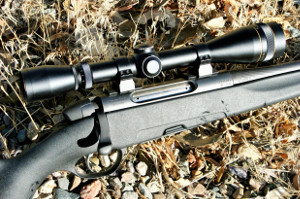
Here’s a look at a very popular hunting cartridge in Europe, the 7×64 Brenneke. Introduced in 1917, it seems destined to make it to its 100th birthday. Detailed testing reveals some very interesting facts about this time-honored cartridge, long known and used by serious European hunters.
In 1917, hunters most certainly maintained a very practical and conservative viewpoint when it came to what worked in the field. Back then, ammunition manufacturers had a pretty much blank slate when it came to designing a new cartridge. Most anything they could dream up would be venturing into new ballistic grounds. Ninety years ago, hunters would not rush out to purchase a new rifle unless it offered them a distinct advantage. My last Magic Metrics article covered the even earlier introduced 7×57 Mauser, one of the first rounds to be offered in smokeless powder loadings. Looking back, I am certain that many hunters may have viewed the much taller 7×64 as a “magnum” in its day. Almost rivaling the US “standard” .30-06 in longevity, surely the 7×64 must have something going for it to have become the preferred hunting round by so many European hunters. Ken ordered up a rifle so chambered, gathered up components, and started loading and shooting, loading and shooting. One-hundred sixteen bullet and powder combinations later, you will be amazed at the results he obtained with this cartridge, in what proved to be a potentially very accurate rifle.
Chapter 1: The Cartridge and Test Rifle
Click for LOAD DATA SHEET
In 1917, hunters most certainly maintained a very practical and conservative viewpoint when it came to what worked in the field. Back then, ammunition manufacturers had a pretty much blank slate when it came to designing a new cartridge. Most anything they could dream up would be venturing into new ballistic grounds. Ninety years ago, hunters would not rush out to purchase a new rifle unless it offered them a distinct advantage. My last Magic Metrics article covered the even earlier introduced 7×57 Mauser, one of the first rounds to be offered in smokeless powder loadings. Looking back, I am certain that many hunters may have viewed the much taller 7×64 as a “magnum” in its day. Almost rivaling the US “standard” .30-06 in longevity,...
surely the 7×64 must have something going for it to have become the preferred hunting round by so many European hunters. Ken ordered up a rifle so chambered, gathered up components, and started loading and shooting, loading and shooting. One-hundred sixteen bullet and powder combinations later, you will be amazed at the results he obtained with this cartridge, in what proved to be a potentially very accurate rifle.
Turning to QuickLOAD for beginning load data, I soon realized that a “case is a case”, and subtle differences in a dimension here and there does not matter to the combustion process. Once my mind was satisfied that I was just dealing with a cartridge almost like a .280, my comfort level rose, and I eagerly began to see how well this new-to-me cartridge could perform. In a way, this was good, as I had no real pre-conceived notion about what it could or could not do.
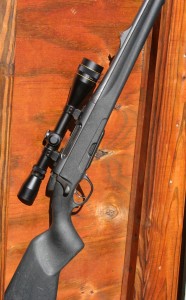
To further ease the pain, I chose to use a Steyr ProHunter with a 23.6” barrel, knowing that if I do my reloading work, I most certainly will be rewarded with many winning recipes for hunters. That is very important to me, as the huge labor cost of loading and accurately shooting well over 800 rounds can end in great disappointment if you later find the gun was not up to the accuracy task. While I have and use spotting scopes, it does save time if you can see each shot as you fire it. I therefore chose to install a Leupold 6-18 power, Vari-X II scope, in their QRW base and ring system. This allowed me to see almost every round fired as the bullets were sent downrange.
Chapter 2: Reloading Components Tested
All loads were ignited by Federal 210, standard large rifle primers. The relatively modest powder charges did not require magnum primers. I tested sixteen powders in combination with fifteen bullets- almost 120 variations were tried. Powders included Vihtavuori N550 and N560, Hodgdon H4198, H414, H4895, H4350, Varget, and H4831SC, IMR 4350, and 4831, Accurate 5477, 2015, 4350, 3100 and Mag Pro, and finally, Winchester 760.
The fifteen bullets I shot came from four manufacturers: Hornady- 100-grain hollow point, 139 and 154-grain...
InterBonds, the sleek 162-grain SST, and traditional round nose soft points in 154 and 175-grains. Nosler provided the 120-grain Ballistic Tip, and Partitions in 150, 160 and 175-grains. Additionally, I got to test their sleek new lead-free, guilding metal E-Tip bullet of 150-grains. Barnes came through with the new 120-grain Tipped Triple Shock bullet and TSXs in 140 and 160-grains. Lastly, I was able to include the also lead-free, copper Lapua Naturalis round nose bullet with the green plastic nose tip designed to help initiate expansion. Just as in the US with the .30 caliber, European hunters can find a bullet to suit most any hunting application for the 7×64. Reloading was performed using my Hornady Lock-N-Load Classic press and their reloading dies. Charges were thrown and weighed using the RCBS ChargeMaster Combo powder dispensing system.
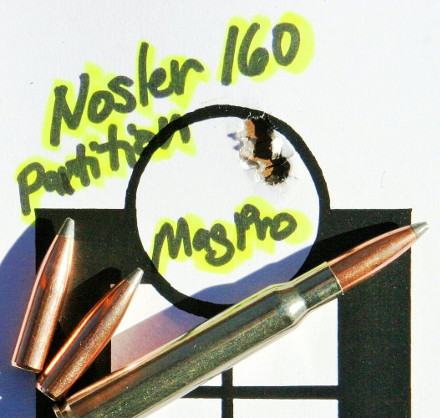
While some cartridges have very short throats to the rifling, I was amazed at the jump most bullets would have to make to reach it in the European standard chambering in 7×64. A 175-grain Hornady round nose bullet, barely into the case 0.16” with an overall length of 3.58”, still did not engage with the start of the rifling. Most bullets I checked using the Hornady Lock-N-Load O.A.L. Gauge would be out of the case if loaded to be just off of the rifling- this of course would be impossible. I have no idea why this design factor was decided on back in 1917, but it had me concerned as to what impact, if any, it might have on accuracy. Even a heavy 175-grain round nose bullet has quite a jump to get to the rifling. Based on the magazine inside dimension of 3.40”, I settled on 3.375” as my maximum loaded length; less so if the bullet needed more depth in the neck to ensure a reasonable grip on the projectile.
Chapter 3: Results and Recommendations
Readers of earlier 8×57 and 7×57 articles may have wondered, “How does this guy get all of his loads to shoot so well?” as I normally cut-off reporting anything much past 1.2” groups. Please do keep in mind that I tested over one-hundred combinations in order to get to the four dozen or so you read about. Originally, I thought it best to only show the reader the...
proven successful rounds. However, the results with the 7×64 caused me to pause and rethink my presentation. I obtained many very incredible combinations that rewarded me with 0.45” to 0.75” three-shot averages from a standard hunting rifle. Imagine my surprise when the very next load might shoot into over 3”, only to be followed by a 0.50” group!
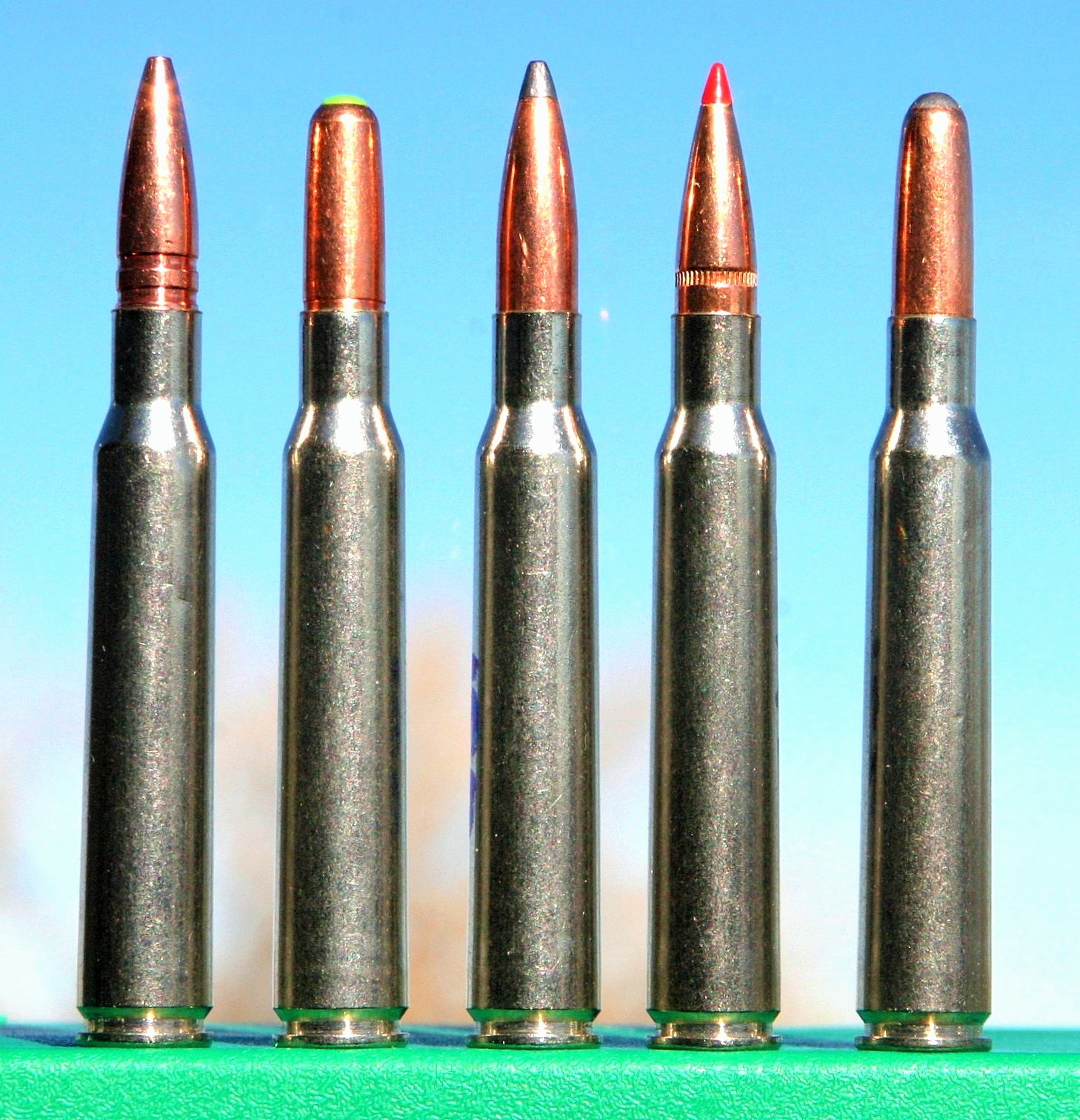
Of course, I checked everything, the scope, the mounts, the stock screws. Besides, if something went wrong, it should stay wrong, and I would not be seeing “shotgun
patterns” followed up by having the very next load resulting in tiny jagged hole. Was the very generous throat the cause of the inconsistent grouping? Who is to know? Support of this might be found in the fact that as bullet weight increased, group size generally decreased. Still I would shoot a 0.43” group with a heavy bullet, then maybe a 0.63” and 0.50” group, followed by a 3” disaster. Sometimes the bad groups came in the beginning, sometimes in the middle, and sometimes towards the end of testing loads with a given bullet. At times, the only thing that kept me going was regularly being rewarded with very respectable groups.
154-grain Hornady round nose liked a full power load over N560, and a MEL using H4895
That being said, I did report very inaccurate loads right next to combinations that would make any hunter proud. Readers should realize from this the true value of trying many powders with your chosen bullet. If you only tried a combination that gave you 3” groups, you might blame the gun, or the scope, or the bullet. From the loading data, you can clearly see the difference powder changes can make with a given projectile. So do yourself a great favor, and try at least three or more propellants with the bullet you have selected for the hunting task.
I only obtained satisfactory accuracy results with one powder under the very short and light Hornady 100-grain hollow point, though eight were tried. It did perform very well though, in earlier testing in the 7×57. The 120-grain Nosler Ballistic Tip gave acceptable performance with three powders and also with H4895 in a MEL. A good hunting load gave...
almost 3,150 fps using N550 and would be great on deer or pronghorn. I have used this bullet to take antelope and small deer with great satisfaction. The longer for same weight Barnes Tipped TSX (TTSX) shot very well with H414 and Varget and also was accurate as MELs over moderate charges of H4198 or H4895. These lighter loads would be good for beginning hunters, or if the expected range was within 200 yards or less. I hunted in Montana for years with a 20” barreled 7mm-08 using the 120-grain Barnes on antelope and deer and always achieved complete penetration.
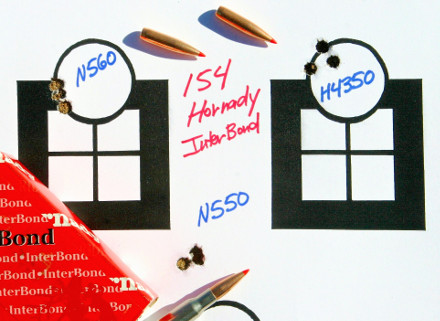
While the 139-grain Hornady InterBond only shot well with the MEL loading over H4198, its bigger 154-grain brother was an altogether different story. The first three loads with it averaged 0.43” with N550, and 0.51 with both N560 or H4350! The one photo clearly shows what a satisfying performer it is- three outstanding groups resulted from firing three different combinations one right after another. Of a bonded core construction, it achieves very good speeds, and it would perform well on medium or larger game. Please note that the Steyr does very well without requiring a fouling shot out of a freshly cleaned and dry bore. The center 0.43” group shot using N550 shows how well it did right after having been cleaned; the first three rounds resulting in a nice cloverleaf. This happened with many loads, over and over again.
I have never seen a cartridge deliver such a varying degree of accuracy with a given bullet
The Barnes 140-grain TSX was also well liked, delivering averages of 0.47” to 0.75” groups, at speeds up to 2,911 fps, with N560 fueling the fastest and most accurate combination. Due to its solid copper construction and near 100% weight retention, it will offer penetration equal to or bettering even heavier bullets. A very accurate MEL was also developed using H4895 for 2,637 fps. The Nosler 150-grain Partitions did well with a top load and a MEL, while the new lead-free E-Tip of the same weight was very selective, giving only good results over N560 powder. The traditional 154-grain Hornady round nose liked a full power load over N560, and a MEL using...
H4895.
A contender for a near or far, medium to heavy game bullet would be the 160-grain Barnes TSX. N550 drove it to 2,716 fps, delivering groups averaging only 0.59”. In this case though, it did not happen to like H4350; reason again to try more than one powder in your rifle under a given bullet. The Lapua lead-free Naturalis bullet of 160-grains was a consistent performer, not at all powder sensitive, achieving 0.75” to 1.02” groups. Its homogenous construction would also serve well from rock-throwing distances up to perhaps 200 yards on medium or heavy game. The same weight Nosler Partition was also an accurate performer with most all powders tested, especially liking Accurate Mag Pro or Vihtavuori N560. This bullet also would serve well on larger game and was capable of 0.43” groups at 2,758 fps, giving it good game potential past 250 yards.
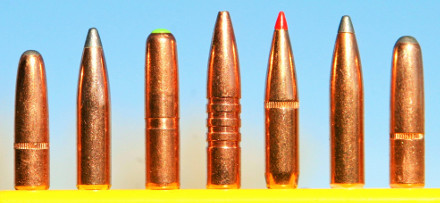
The only factory load I was able to test proved to be a very good one- the Hornady 162-grain SST hitting 2,704 fps and shooting into only 0.75”. Its very sleek profile makes it great for longer range hunting tasks. Only one handload was able to beat its accuracy, and that was driven by H4350 for just slightly less velocity. The best loads under the heavyweight 175-grain bullets drove the Hornady RN and Nosler Partition to 2,575 fps and 2,619 fps respectively, shooting into 0.55” or 0.59”. Either bullet could cleanly harvest most any game in Europe, North America, or even Africa, save for dangerous game. The MELs load for each of these heavy projectiles would make a great round for use on woods or driven hunts where the angle of your shot cannot always be perfect. The lower recoil and blast also helps to promote fast follow-up shots in heavy cover.
Chapter 4: Summary
I have never seen a cartridge deliver such a varying degree of accuracy with a given bullet just by changing the propellant. Obviously, the Steyr ProHunter is not at fault, as a 3” group was sometimes followed, or preceded, by a near cloverleaf group. It also proved during shooting, that as the bullet weight increases, the sometimes irregular accuracy results calmed down quite a bit. Just as certain, a hunter who is...
willing to try several powders with a given bullet should be rewarded with excellent groups. As good hunting bullets can be had in a broad range, running from 120 to 175-grains, a one rifle hunter would be very well served by choosing a 7×64 as his main, or even only, hunting weapon. Deer, antelope, pigs, black bear, elk or moose, or most African game can all be cleanly harvested with the right bullet in this cartridge. Top loads, with even the heaviest bullet, still deliver relatively modest recoil.
This cartridge also displayed a willingness to perform accurately with moderately powered MELs, proving it can also be a good hunting choice for young hunters and shooters of slight build not needing to beat themselves up with a magnum. With modern bullets far outperforming those of 1917, both on paper and in the field on game, it honestly is hard to suggest that more gun is really ever needed for 95% of all hunting situations. Almost 90 years of success in the field is actually testament enough for the 7×64, and the reason why it certainly will celebrate its 100th birthday in the hands of many successful hunters.